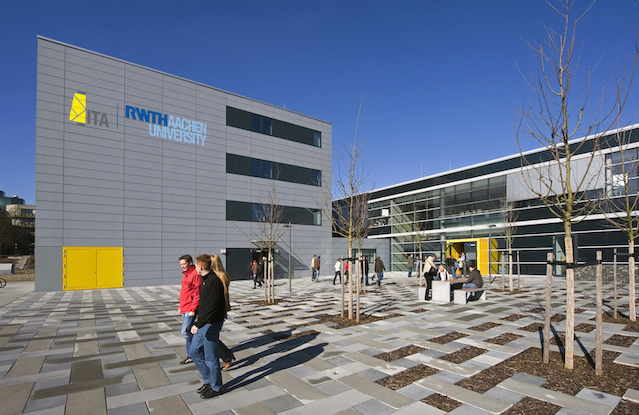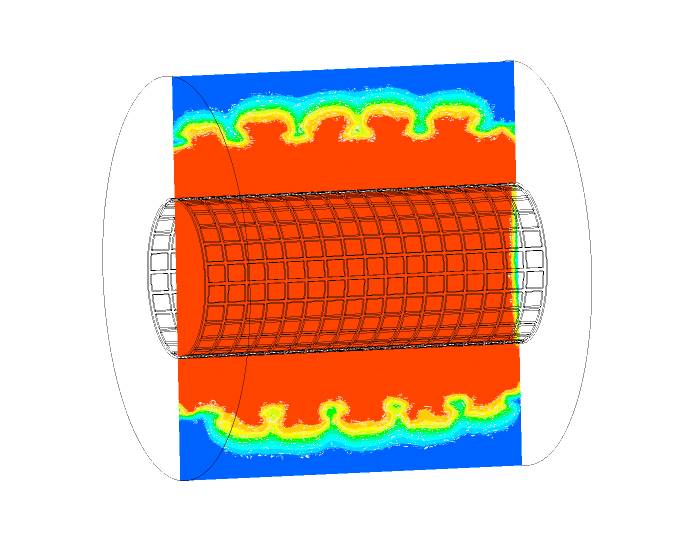Faulty dyeing in the German textile and clothing industry results in costs of 8.8 million euros, which the industry can no longer accept in light of the increasing price competition from East Asia. The aim of a multidisciplinary project called DensiSpul at the German Federation of Industrial Research Associations - AiF (Arbeitsgemeinschaft industrieller Forschungsvereinigungen) is to reduce the rejection rate of poorly colored bobbins by at least 15 percent through the use of simulation. The success of the project could mean annual savings of approximately 1.3 million euros in Germany. Our institute is collaborating on the project with the Institute for Textile Technology (ITA) at RWTH Aachen University and the Society for the Advancement of Applied Computer Science (GFaI).
Virtual Bobbin Dyeing and Optimization
AiF Project DensiSpul
Winding Process Determines Color Quality
In 2012, a total of approx. 361,000 tons of fibers were processed in the clothing and home textiles sector in Germany. Approx. 30 percent of these fibres are wound on bobbins in Germany and then dyed in a dye bath. When dyeing bobbins, the most important thing is the uniformity of the dyeing through of the yarn bobbin in order to guarantee high quality for subsequent processing. The dye penetration in turn depends decisively on the homogeneity of the density distribution of the wound yarn and thus on the setting parameters of the winding machine.
Aim: Reduce Rejection Rate by at Least 15 Percent
One of the aims of DensiSpul is to develop a system that generates recommended settings for the winding machines on the basis of a simulation. Together with the other project partners, we are developing an algorithm to simulate a virtual bobbin based on the machine setup parameters. We then calculate an optimized density of the virtually wound bobbin for the subsequent dyeing process. The CT imaging of actual wound bobbins is always a priority focus for the validation of the material models. Ultimately, from the optimized virtual bobbin, the recommended setup parameters for the winder can be determined.



